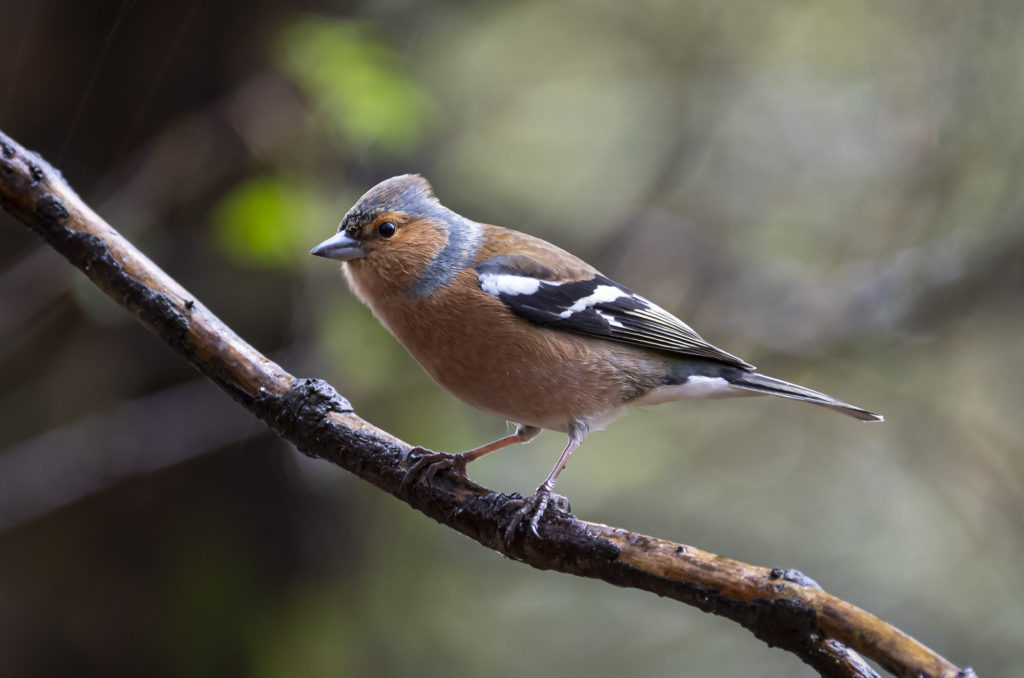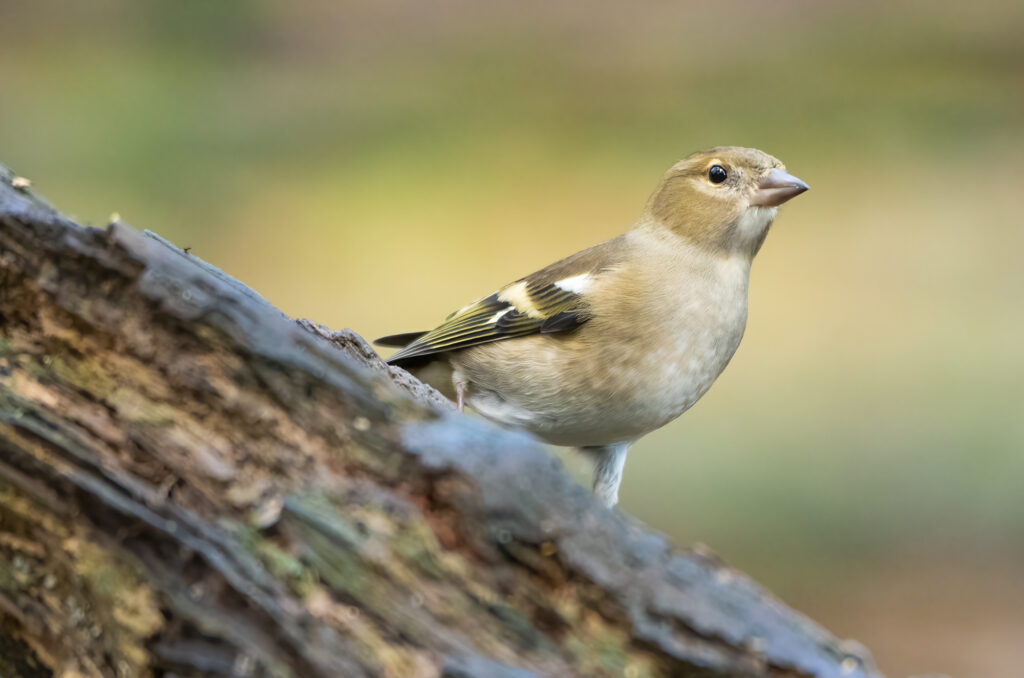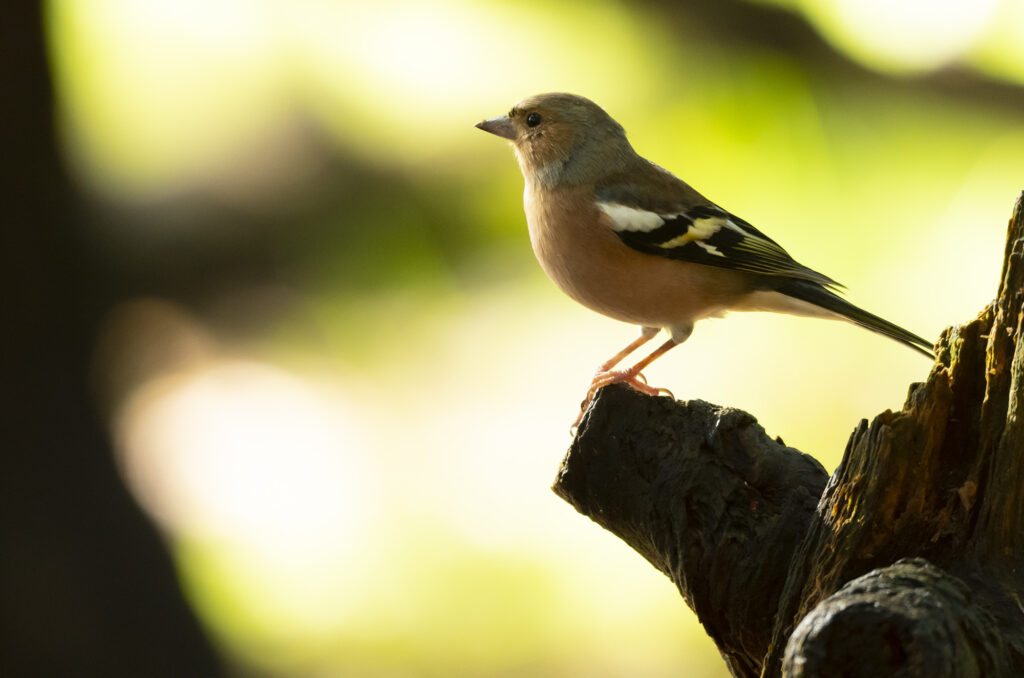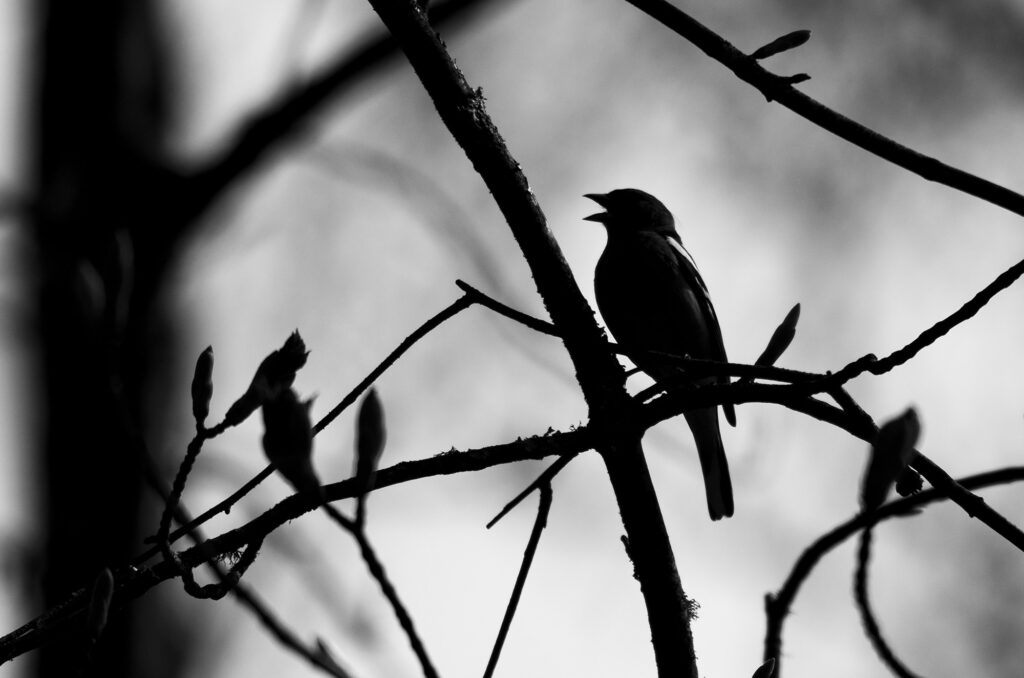The chaffinch is the antithesis of the familiarity breeding contempt cliché. Males are colour-shifting sopranos. Females are master nest engineers and boss the breeding season. These feisty finches make perfect subjects for a long-term photography project.
The mafioso male
Male chaffinches are easily identified by their stunning pink breast and blue-grey crown, although this plumage changes during the year. Like many species, they look their best just before the breeding season begins, but the striking steel-coloured crown does not appear due to the bird moulting. Instead, the brown-coloured feather tips wear away to reveal the new colour hidden beneath. The female chaffinch plumage is much more subtle but still an attractive mix of buff and brown. The patterned plumage of both sexes enables them to blend in when feeding on the ground.

As well as being more easily spotted from their plumage, male chaffinches also rule the roost when it comes to their song. They start to defend their breeding territory in January, so at this time of year, you may hear this bird singing loudly in many places. The chaffinch is known as ‘the laughing gangster’ due to the series of descending laughing notes and finishing flourish in its song, which sounds like “hahaha, hahaha, hahaha, I shot you!”. This song will differ slightly depending on where you are, as chaffinches have regional accents.
The mob wife
Like all the best goodfellas, the male chaffinch is flashy, loud, and the boss of the branches. That is until nesting starts. Behind every great male, there is a remarkable female – and the chaffinch is no exception. She expertly takes control of the nest-building process to ensure it is successful, and she has no qualms about putting her loud-mouthed partner in his place; when you hear a chaffinch between April and late May, it is likely to be the female doing just that.

She has a right to be haughty, as the female chaffinch builds the nest without help from her mate. This engineering feat will take around a week to complete and could take over a thousand trips to gather the necessary nesting materials – grass, twigs, moss, feathers, hair, and spider webs to bind it all together. The resulting structure is strong and lightweight, meaning it can be moved if the location is deemed unsatisfactory.
A boss bird in crisis?
In the 2022 RSPB Big Garden Birdwatch, chaffinches were the 4th most counted bird in Scotland, and their overall numbers had also increased by about 9% compared with 2021. So far, so positive. However, between 2008 and 2018, chaffinch numbers dropped by 29% in the UK. We also need to be aware of the fate of our greenfinches when considering what the future looks like for the chaffinch. We lost 67% of our greenfinches between 2008 and 2018, and this species has now moved to the red list in last year’s UK Birds of Conservation Concern assessment.

Researchers now think that trichomonosis – a disease that affects the bird’s throat, making it difficult to eat and swallow food – may be causing the crash in greenfinch numbers. The spread of this disease in 2005 coincided with the decline in our finches. A new study – published in the journal Scientific Reports – notes that survival rates of greenfinches and chaffinches were lowest in habitats closely associated with humans. The issue is that trichomonosis spreads through contaminated food and water. So, when we are trying to help our local birds by putting out food and water in our gardens and parks, we may inadvertently be helping the disease to spread. The results of this new research provide a stark reminder of the necessity for frequent cleaning of our feeders, water containers and bird tables.
The common finch in focus
While I am on the subject of chaffinches in human spaces, it goes without saying that if you are lucky enough to have them in your garden, this is an ideal place to photograph them. However, if you are trying to find a location to photograph these birds, you are most likely to spot them in wooded areas and under hedges where they can feed comfortably on the ground. It is, therefore, worth remembering to increase your ISO to ensure you can capture a sharp shot when the chaffinches bounce in and out of the shadows.
As with other finches, the stout beak of the chaffinch is a great feature to highlight. I am not great at spotting silhouette opportunities, but even I couldn’t miss the one captured in the image below. I manoeuvred myself into position with the light behind this male and managed to get a few shots before he decided to fly off. When it came to processing, I chose a black-and-white conversion to take any attention away from the male chaffinch’s peachy plumage and put all the focus on his wide-open chunky beak.

I have no doubt squandered opportunities to capture chaffinch behaviour; photographing this species has always been a bit of an afterthought rather than something I have sought to do. Having researched these fascinating birds, I know I have missed a trick. The complicated relationship between the males and females – both tough characters in their own right – deserves our attention. You could do much worse than pointing your lens at these familiar finches.

